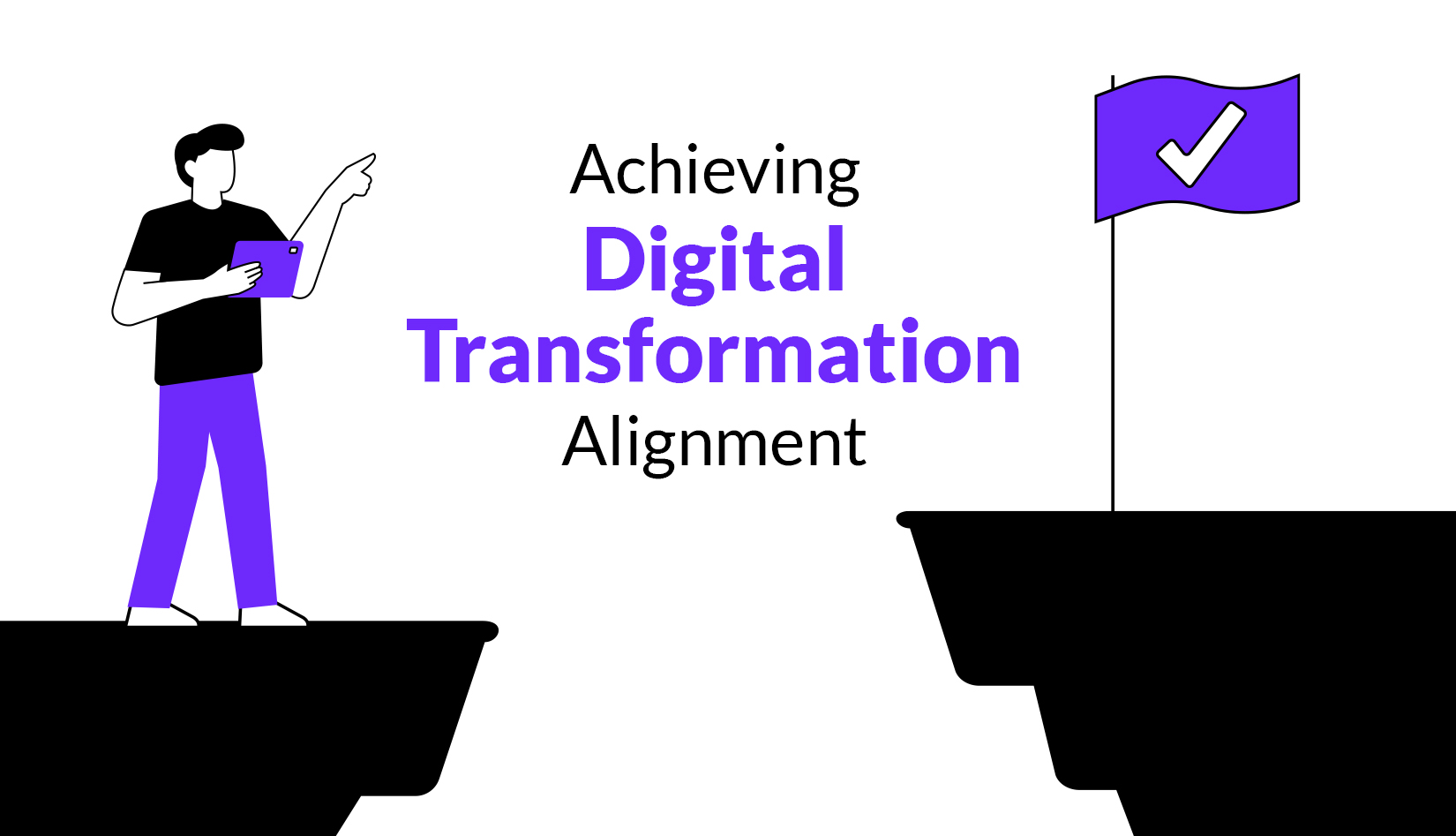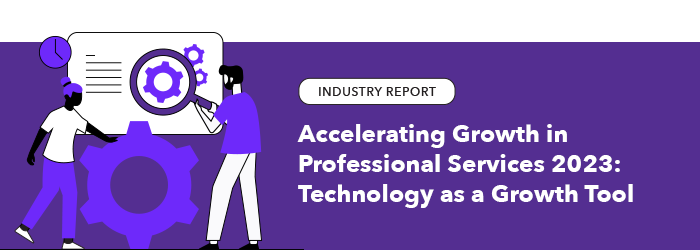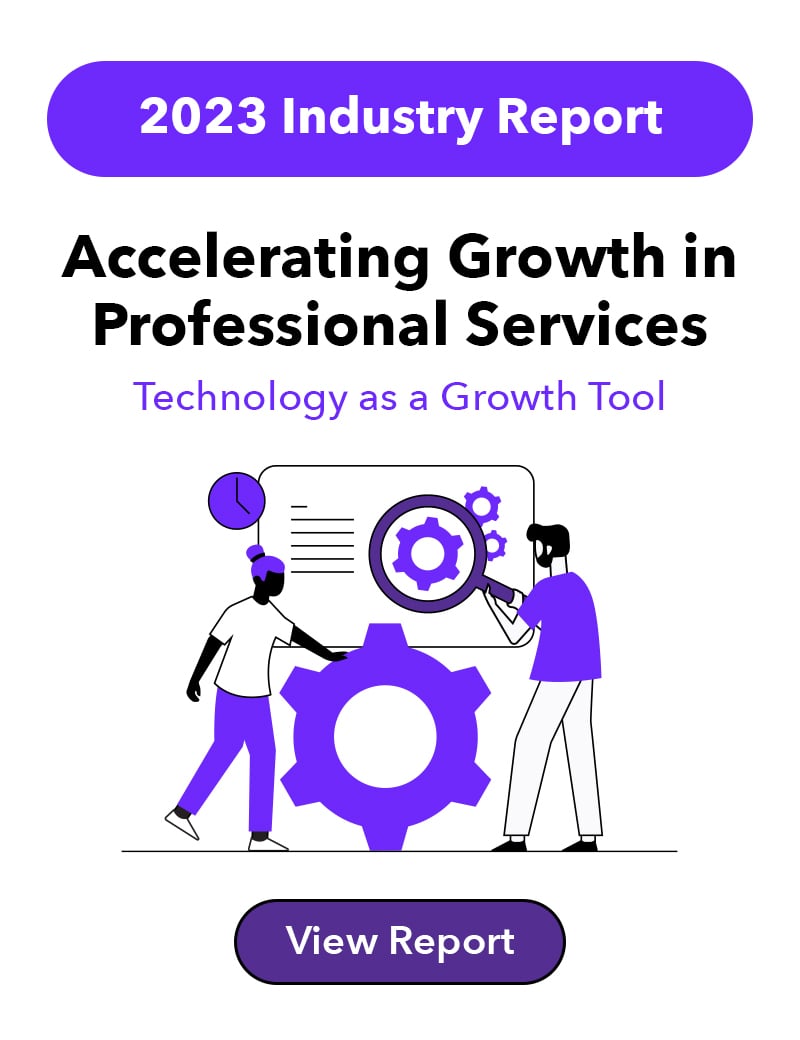We've mentioned countless times how important digital transformation is to a successful and sustainable business strategy. Given how fast-paced the world is now, technology is a necessary tool to help teams achieve their goals, in terms of revenue, efficiency and employee satisfaction.
However, the professional services industry is notoriously resistant to adopting more cutting-edge, tech-forward strategies. Even when teams value digital transformation, they struggle to implement technology in an effective way.
During our beginning-of-the-year industry report, we uncovered one massive potential roadblock that's causing this stagnation: there's a disconnect between different levels of the organization in perceptions of how well they're adapting to digital transformation.
The Disconnect
100% of C-suite respondents noted that they think professional services firms are doing an average to above-average job at keeping up with digital transformation, while 100% of management-level respondents said that they were doing below average.
While team members in the entire organization value technology as a tool to support and accelerate their efforts, management-level employees, typically the ones who stand the most to benefit directly in their day-to-day duties, are often highly aware of the gaps that need to be filled.
So the question is, how can teams go about securing alignment between the C-suite and management levels to ensure that digital transformation goals are effectively set and executed on?
How Firms Drive Alignment on Digital Transformation Efforts
To answer this question, we decided to get some insight from some industry experts on the strategies that they employ to ensure that their firm has an airtight tech strategy that all levels of the organization are aligned on.
We were able to get a perspective from the VP, Management, and Coordinator roles to see how digital transformation is viewed and executed from all levels in the organization. Check out their insight below.
Develop Cross-Functional Steering Committees
Current VP of Strategic Partnerships & Alliances at Alteryx and veteran growth leader Debika Sharma told us that creating cross-functional committees is crucial to maintaining alignment on digital transformation initiatives.
By spreading the reach across multiple departments, you're ensuring that all relevant stakeholders have their hand in the direction of the digital transformation journey. Too often, digital transformation exists in a silo, typically in the IT or innovation department. However, there are opportunities for technological improvements in all other departments. If you leave it up to IT to decide where to innovate, you could miss out on crucial improvement areas.
Debika mentioned the importance of "inviting LOB leaders to tell the digital transformation story from multiple vantage points." Digital transformation is so broad, and there are seemingly endless ways you can make changes on this front. Getting the full picture of the different vantage points can help you build out a more well-rounded and impactful digital transformation strategy.
Align Efforts with the Overall Mission of the Organization
One leader gave us insight into their perspective from the management level. They mentioned, "I think alignment begins to happen when leadership can affirmatively prove that their efforts align with the overall mission of the organization, and deliver on real problems for their clients/stakeholders."
Too often, teams tend to accept initiatives that are "good enough" instead of digging into smaller, potentially more difficult-to-achieve instances of "the right fit." These cumulative instances of lackluster results can snowball into a completely wrong fit and derail any digital transformation efforts.
They mentioned that in order for a digital transformation program to be successful, you need to make sure at every step of the way that you're only implementing technology that is in line with your key goals and the needs of your stakeholders. This may mean making smaller, incremental changes rather than sweeping changes all at once to be able to take a temperature check on outcomes.
"Everything doesn't have to be 100% in order to execute and deliver," they added, "however everything should culminate into solutions that clients, stakeholders and beneficiaries can appreciate."
In summary: don't be scared to follow the "slow and steady wins the race" mentality to make sure that you're not running full force down the wrong path.
Thoroughly Engage All Stakeholders
We're lucky to have a former legal marketer on our team who could provide some insight from the associate/coordinator level. She mentioned that in her time as a legal marketer, she noticed that "alignment happens when impacted stakeholders are engaged throughout the entire organization."
This engagement includes:
1. Conversation around the exact pain points that need to be addressed.
2. An assurance that appropriate resources are available for the life of the initiative--from research to rollout.
3. A commitment from leadership to advocate for the initiative by supporting a culture shift towards innovation.
In her experience, when digital transformation went wrong, leadership selected new tools in isolation from the teams that would use them, making it difficult to clearly understand the true challenges or full scope of downstream resources needed to make the implementation of this new technology successful.
For example, at a prior firm, the rollout of a highly powerful platform ended in lackluster results due to a lack of data available to feed into the platform, resources to implement it, and time from key stakeholders to invest in the implementation. From leadership's perspective, they've invested in the latest and greatest resource for their organization, but from the day-to-day contributors' perspectives, they have an expensive but unusable tool, and they typically revert back to the old way of addressing the problem at hand.
Clear communication, expectation setting and consistent check-ins between stakeholders and leadership can help teams to avoid these costly and frustrating mistakes.
Make Your Technology Investments Worth It
Technology is a lofty investment for firms of any size. If digital transformation is on your list of priorities (and it should be) you want to make sure that every tool you add to your stack is necessary and has all the resources to be implemented properly.
Using these tips from industry experts will ensure that your digital transformation initiatives are positioned for success from brainstorming to implementation.
Want to discover more insights that we identified in the industry report? Download it now.
 May 23, 2023
May 23, 2023





